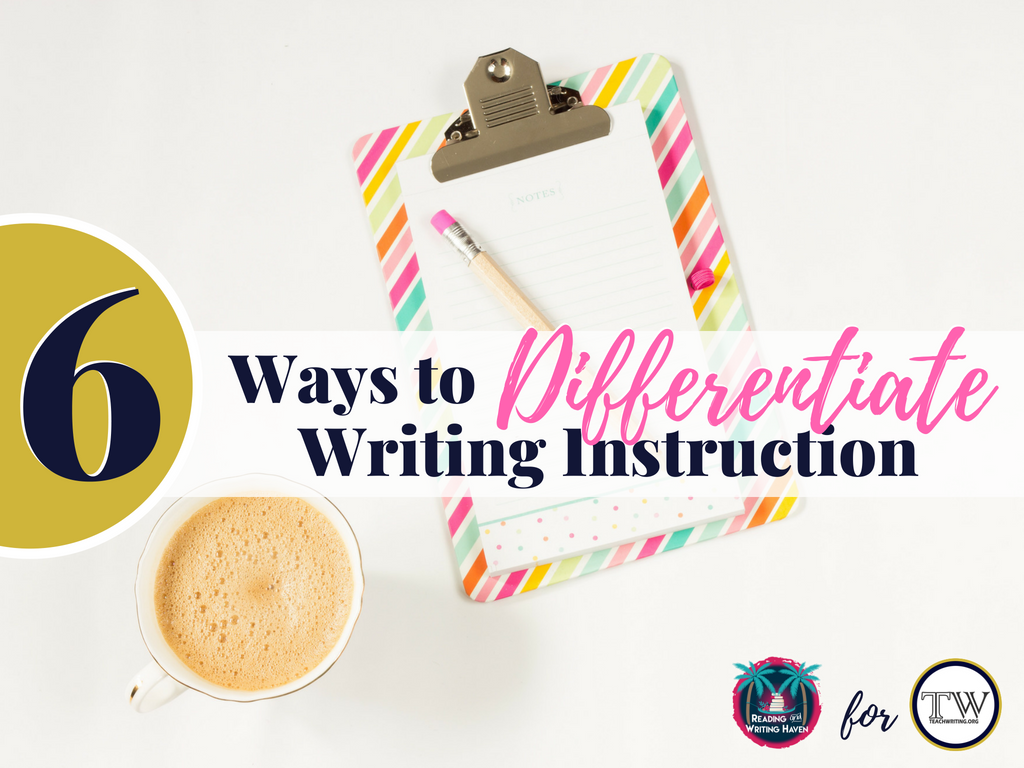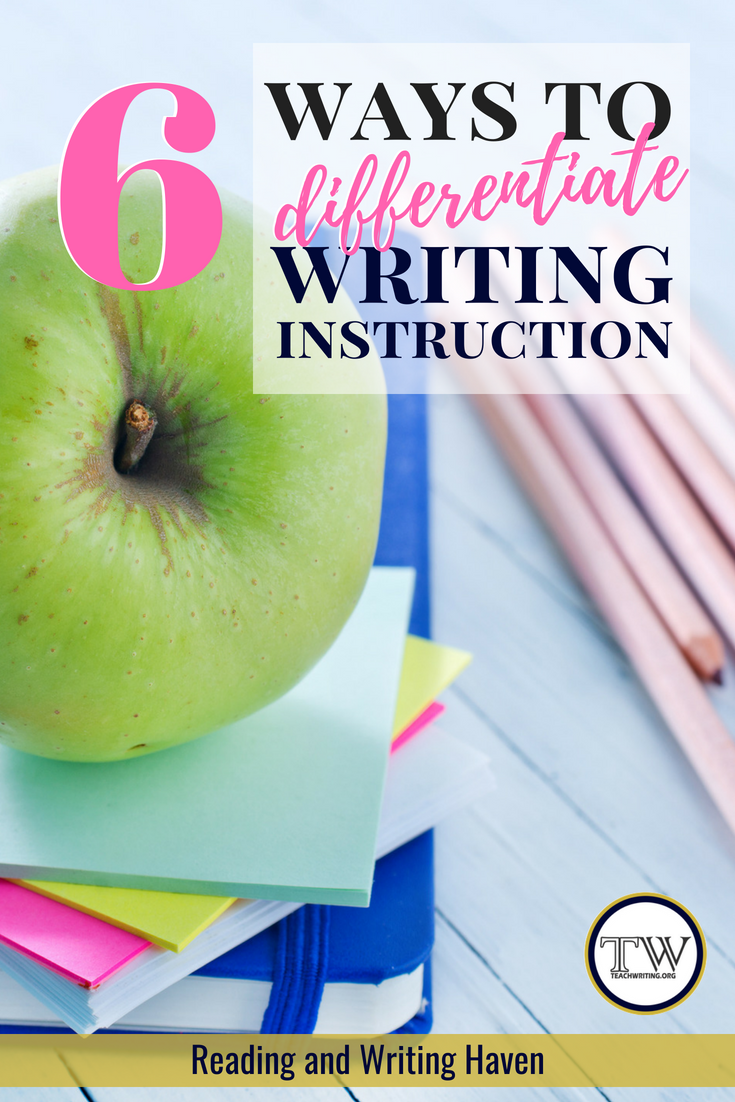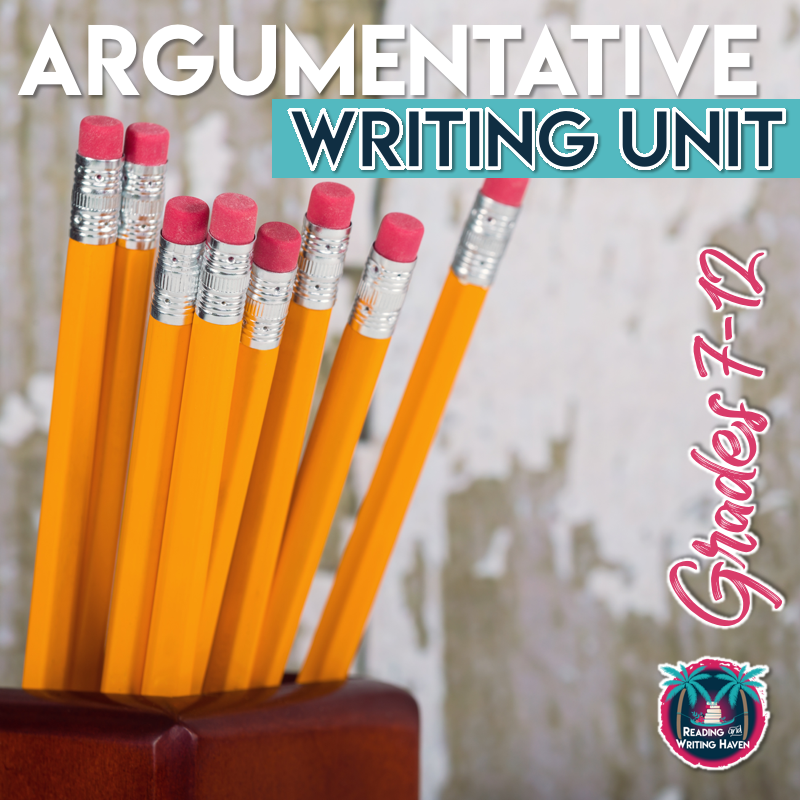6 Ways to Differentiate Writing Instruction
Looking for some new tricks to spice up your writing unit? These are some of my favorite ways to differentiate instruction so that all students are successful.
ANTICIPATE POINTS OF FRUSTRATION
I know, based upon my pre-assessment findings, that my students will struggle with certain aspects of writing an essay. For example, they are confused about how to make a whole paragraph out of an introduction. They write questions for thesis statements, and they talk about their essay. Also, students often lean toward summarizing instead of synthesizing in the conclusion.
If you are able to anticipate the skills where they have gaps in knowledge, you can front-load your mini-lessons to target students' needs. I always spend quite a bit of time talking about how to write an effective hook, what to put in the background information, and how to frame the essay in the conclusion.
The beginning and ending of the essay are always the most difficult for my students. Providing choices when scaffolding is the most important ingredient I've found to positively impact students' attitudes about writing these paragraphs. Read more about how I scaffold the introduction and conclusion paragraphs on my blog.
OFFER TOPIC CHOICE
Because students' writing abilities vary, they need different kinds of structure with topic selection. Some students need to have options. Other students need to be provided with or guided through selecting sources. Still others need complete freedom to choose the topic and the sources in order to feel fully invested in the paper. You can read about some specific ideas for differentiating topic choice and funneling research questions here.
COLOR CODE AND EVALUATE
One of my favorite activities when teaching writing is color coding. I ask my students to identify the essential components of different paragraphs by highlighting or underlining each sentence. This exercise helps them in a couple ways.
They begin to understand, through repetition and brain-based color associations, what they need to include in their own paragraphs.
They naturally start to evaluate whether each component in the example is effective.
ENRICH WITH TRANSITION SENTENCES
Many of my strong writers are ready for a challenge. One way I've had success with quenching talented writers' desire to improve is by teaching transition sentences. I show them how they can move from one-word transitions to phrases or dependent clauses. From there, they can begin to use an entire sentence to transition between paragraphs.
I've scaffolded this lesson for my struggling writers before, and sometimes it works, but I don't push it on them. However, I do push my enriched and advanced students to begin using this technique by modeling it for them and providing examples.
Because this lesson is relatively simple, they catch on quickly. It is such a powerful skill that once they can wield a transition sentence with ease, they grow in their own confidence as writers.
USE ENTRANCE AND EXIT SLIPS
I wouldn't say that I run a formal writer's workshop in my classroom. I love the model, but it doesn't always work for my specific situation. Still, I try to incorporate elements of writer's workshop whenever possible because it is such an amazing differentiation tool.
Sometimes, I give students an exit or entrance slip and ask them what they'd like to work on that day (or the next day) to improve their writing when we are in the middle of an essay. I've provided them with options, like: Would you like to work with the teacher to write a paragraph together ... OR ... Would you like to analyze and evaluate an example paragraph with a small group?
This same concept can be applied to many different situations. Would you like to work with a partner to revise your introduction ... OR ... Would you like to improve the word choice in your rough draft?
Entrance and exit slips (even informal ones like lists on the board or a Google Form) can provide teachers with data for future instruction and students with the choice they need to make class time meaningful.
CREATE MEMORABLE ACRONYMS
If you want to give students an easy way to remember what information needs to be included in each paragraph of an essay, try creating some memorable acronyms. This approach is great for struggling writers. Some students honestly don't know how to make an introduction paragraph more than one sentence. They need structure.
I created these acronyms for argumentative writing, but they would also work for other genres as well. Teachers can ask students who need enrichment to analyze example essays and come up with acronyms to share with their classmates.
And those are six ideas for differentiating writing instruction with pretty much any genre. Differentiating teaching approaches will result in less frustration and more positive attitudes toward writing, which is a win-win for everyone involved.
RELATED POSTS:
TEACHING THE INTRODUCTION PARAGRAPH
TEACHING BODY PARAGRAPHS
TEACHING THE CONCLUSION PARAGRAPH
SPOTLIGHT RESOURCE:
This argumentative writing bundle contains all of the resources I use to scaffold students' experience with writing essays about controversial topics. It contains lessons that address common areas of weakness and is designed to help teachers support students so they can all achieve success.
ABOUT THE AUTHOR
Melissa is the creator of Reading and Writing Haven and a collaborative blogger on Teachwriting.org.
A middle and high school English teacher for over a decade now turned instructional coach, Melissa is an avid reader and writer, and she loves sharing ideas and collaborating with fellow educators. Melissa use her degrees in English, Curriculum & Instruction, and Reading as well as her Reading Specialist certification to ponder today’s educational issues while developing resources to help teachers, students, and parents make learning more relevant, meaningful, and engaging.
When she's not teaching, Melissa lives for drinking a good cup of coffee, loving on her family, working out, and contemplating the structure of a sentence as well as how she can lead her students to deeper reading comprehension (Melissa's true nerdy passions).
Visit Melissa on Instagram, Facebook, or Twitter for English teacher camaraderie and practical, engaging teaching ideas.




